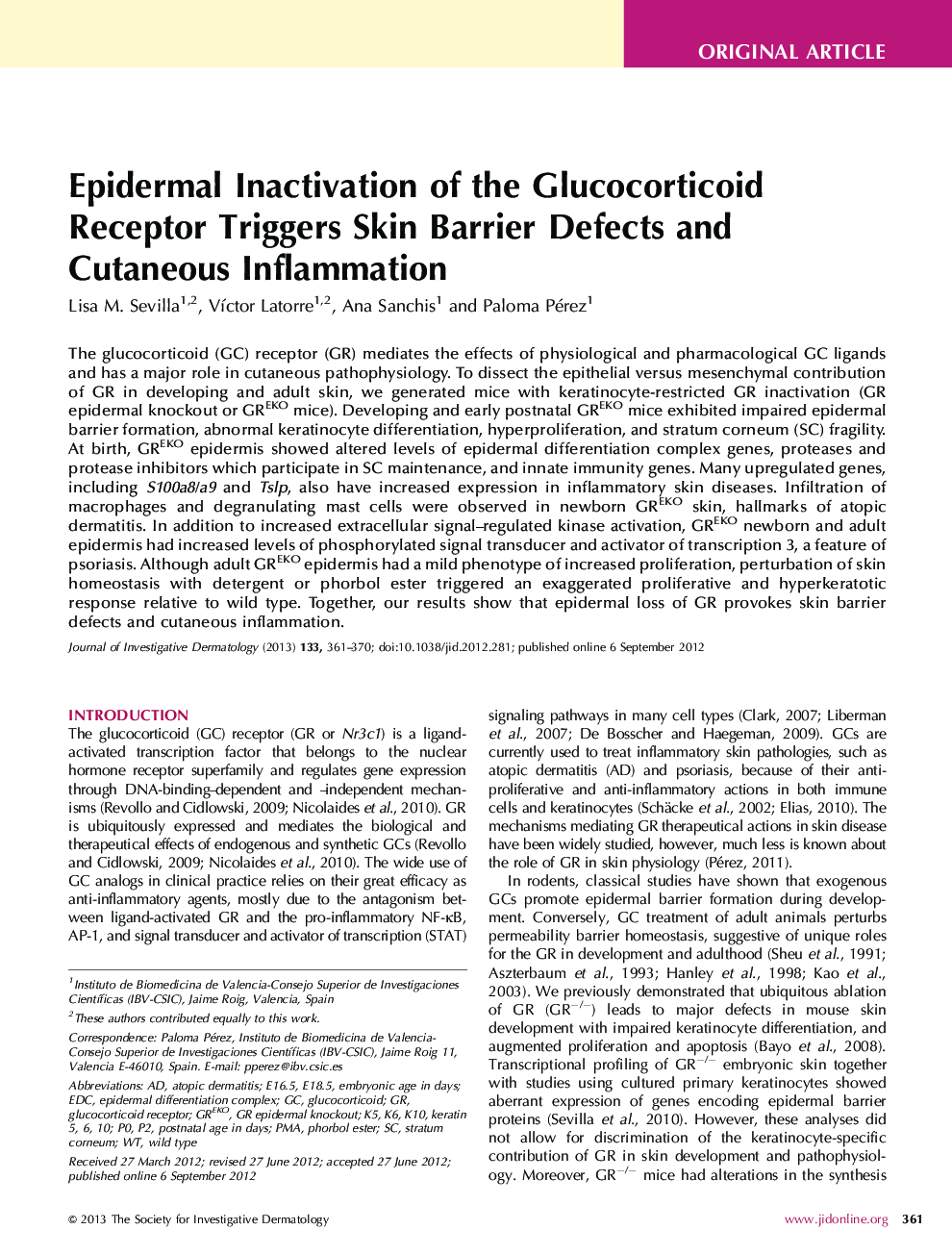| کد مقاله | کد نشریه | سال انتشار | مقاله انگلیسی | نسخه تمام متن |
|---|---|---|---|---|
| 6077964 | 1203551 | 2013 | 10 صفحه PDF | دانلود رایگان |
عنوان انگلیسی مقاله ISI
Epidermal Inactivation of the Glucocorticoid Receptor Triggers Skin Barrier Defects and Cutaneous Inflammation
ترجمه فارسی عنوان
غرق شدن اپیدرمی گیرنده گلوکوکورتیکوئید باعث نقص مانع پوستی و التهاب پوستی می شود
دانلود مقاله + سفارش ترجمه
دانلود مقاله ISI انگلیسی
رایگان برای ایرانیان
موضوعات مرتبط
علوم پزشکی و سلامت
پزشکی و دندانپزشکی
امراض پوستی
چکیده انگلیسی
The glucocorticoid (GC) receptor (GR) mediates the effects of physiological and pharmacological GC ligands and has a major role in cutaneous pathophysiology. To dissect the epithelial versus mesenchymal contribution of GR in developing and adult skin, we generated mice with keratinocyte-restricted GR inactivation (GR epidermal knockout or GREKO mice). Developing and early postnatal GREKO mice exhibited impaired epidermal barrier formation, abnormal keratinocyte differentiation, hyperproliferation, and stratum corneum (SC) fragility. At birth, GREKO epidermis showed altered levels of epidermal differentiation complex genes, proteases and protease inhibitors which participate in SC maintenance, and innate immunity genes. Many upregulated genes, including S100a8/a9 and Tslp, also have increased expression in inflammatory skin diseases. Infiltration of macrophages and degranulating mast cells were observed in newborn GREKO skin, hallmarks of atopic dermatitis. In addition to increased extracellular signal-regulated kinase activation, GREKO newborn and adult epidermis had increased levels of phosphorylated signal transducer and activator of transcription 3, a feature of psoriasis. Although adult GREKO epidermis had a mild phenotype of increased proliferation, perturbation of skin homeostasis with detergent or phorbol ester triggered an exaggerated proliferative and hyperkeratotic response relative to wild type. Together, our results show that epidermal loss of GR provokes skin barrier defects and cutaneous inflammation.
ناشر
Database: Elsevier - ScienceDirect (ساینس دایرکت)
Journal: Journal of Investigative Dermatology - Volume 133, Issue 2, February 2013, Pages 361-370
Journal: Journal of Investigative Dermatology - Volume 133, Issue 2, February 2013, Pages 361-370
نویسندگان
Lisa M. Sevilla, VÃctor Latorre, Ana Sanchis, Paloma Pérez,
